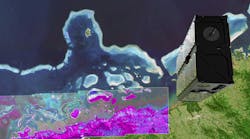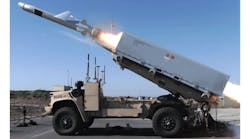Editor in Chief
It’s one thing to talk about electronic and electro-optic systems interoperability among the U.S. military, allied forces, civilian law enforcement, and first responders. Actually doing something about it is quite another.
Recent international exercises involving U.S. and allied military forces, as well as police departments and first responders, are finally getting the idea across that military leaders are getting very serious about interoperability.
The notion of interoperability among radios, command-and-control (C2) systems, and data networks has been a hot topic of discussion since at least 1983 during the U.S. invasion of the Caribbean island of Grenada. U.S. forces made news then when they resorted to public telephones and AT&T calling cards to request air support when their military radios didn’t work with others in their task force.
After that well-publicized embarrassment, interoperability was on the lips of anyone in the U.S. military who was even slightly concerned about voice and data communications. Among the results of these discussions were the U.S. Single Channel Ground and Airborne Radio System, otherwise known as SINCGARS, and the future Joint Tactical Radio System.
Despite technological progress such as this, however, the terrorist attacks of Sept. 11, 2001, painfully demonstrated that federal and local authorities still had a long way to go to achieve anything resembling across-the-board communications interoperability.
One of the most painful and frustrating lessons of 9/11 involved officers of the New York Police Department who from helicopters saw evidence of the imminent collapse of the Twin Towers, but were unable use their radios to warn the city’s firefighters inside the buildings.
Most of us are aware of the numbers of first responders who were killed: 343 New York firefighters and paramedics; 23 city police officers; 37 New York Port Authority police officers. A total of 2,819 died in New York that day.
Now what if something even worse happens in the future, which involves the militaries, firefighters, police, and first responders of several countries? Will these officials be able to communicate with one another? Maybe not today, but those who participated earlier this summer in the Coalition Warrior Interoperability Demonstration (CWID) at sites throughout the world are working toward that goal.
The CWID is an annual exercise involving interoperability trials of systems and technologies that U.S. and allied military commanders consider to be essential for future operations.
The CWID demonstrations ran over the classified Combined Federated Battle Laboratories Network and the DISN LES unclassified network. CWID sites were at U.S. European Command headquarters in Stuttgart, Germany; U.S. Northern Command in Colorado Springs, Colo.; U.S. Naval Surface Warfare Center at Dahlgren, Va.; U.S. Space and Naval Warfare Systems Command in San Diego; and at Air Force Electronic Systems Center at Hanscom Air Force Base, Mass.
Different military commands use the CWID exercise in pursuit of their own goals. The U.S. Northern Command, for example, uses CWID to evaluate emerging technologies for first responders-particularly for communications interoperability-which could be used in future federal disasters similar to Hurricane Katrina.
Interoperability demonstrations and evaluations at Hanscom Air Force Base revolved around coalition command and control among U.S. and European military forces-particularly concerning multilevel security technologies for joint air operations centers.
“We’re here to find out what works, what doesn’t and what we should invest in,” says U.S. Air Force Lt. Col. Robert Pagoni, who oversaw CWID demonstrations at Hanscom. In these evaluations, representatives from U.S. and European military forces were eying new technologies for possible inclusion in allied battle management/command, control, and communications (BMC3) systems.
One part of Hanscom’s portion of CWID involved interoperability between U.S. and European air-tasking orders, which are long directives that involve air targets, refueling, munitions, and cooperation among different air forces.
Formerly done laboriously by hand, these air-tasking orders are now done with computers and data networks-but more work is needed. One core problem addressed during the exercise involved the Command and Control Information System of the Northern European Command, which encompasses Denmark, Norway, and Northern Germany.
“We have an interoperability issue, in that we could not accept the U.S. information format,” explains Maj. Esben Anderson, commander of the 615 Combat Communications Squadron of the Danish air force. “Now we have reformatted our data so we can accept U.S. formats and export them in NATO formats.”
Anderson and his colleagues were at Hanscom to put the reformatted system through its paces and to determine whether the new system worked well enough with U.S. computers and software.
Part of the challenge was to place a Solaris-based system onto a Windows network, and to use the Extensible Markup Language (XML) to translate data from one system to the next, Anderson explains. Tests were successful, and will be delivered in the next upgrades, he says.
Another evaluation involved the Raytheon Distributed Common Ground System (DCGS), which provides physical and electronic distribution of intelligence, surveillance, and reconnaissance (ISR) data. The system offers continuous on-demand intelligence brokering to enable U.S. and coalition forces to alter and adapt their courses of military operations.
With previous multimachine systems this process could take hours or even days. Today the system can do the same job in minutes or even seconds.
“We’re testing a portal we created for users to access the same DCGS information over a Web browser so you can have one machine that can do multiple functions and scan data to see who has what assets available,” explains Charles Magras, lead system engineer for the DCGS integration support contract at General Dynamics Advanced Information Systems.
It is real-world experiments like the CWID that can help make systems interoperability a reality, rather than just talking points and view graphs.




